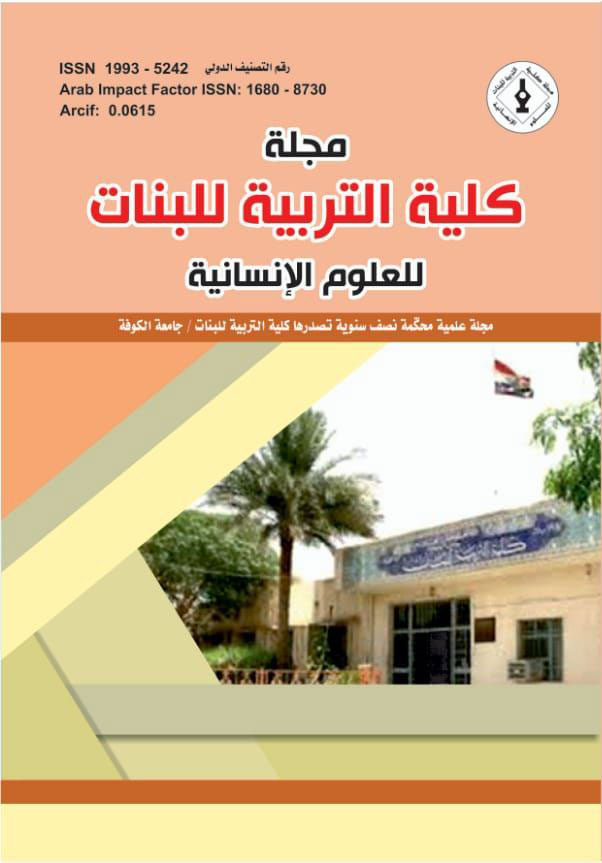IMAGIC ICONICITY IN SAAD SURAH:A MORPHOPHONEMIC STUDY
DOI:
https://doi.org/10.36327/ewjh.v1i27.11138Keywords:
ICONICITY, SAAD SURAH, MORPHOPHONEMICAbstract
Iconicity, the controversial topic over which a lot of ink has been spilt, still manages to occupy the pages of researchers willing to further investigate this inherently interdisciplinary phenomenon. This research is one of many attempts testifying to the claim that iconicity is one possible answer to the notoriously elusive question of the relation between language and reality. For that reason, the endeavor of the ongoing study is to provide linguistically textual evidence for the existence of iconicity as a phonosymbolic process in the discourse of Muslim’s most glorious book, the Quran. The visual, auditory, and tactile dimensions of iconicity on the imagic level take readers on a hypnotic journey through the 88 verses of Saad surah. The paper uses the concept phonological iconicity as a blanket term for a broad range of phenomena, including what has been referred to as sound-symbolism, mimetics, ideophones, phonesthemes, and onomatopoeia. Hence crossing the borders of morphological iconicity, whenever the necessity for the interaction between morphological and phonological or phonetic processes is at hand. Keeping in mind that these different phenomena, while varying in amount and degree, all have in common some non-arbitrary, iconic mapping between form and meaning. As the finest work of classical Arabic literature, the holy Quran presents a marvelous start for a linguistic study of the appearance, form, and representation of phonological iconicity in Arabic language. Fischer and Nanny’s (1999) imagic iconicity is adopted to facilitate the assessment of phonological iconicity in Saad surah. The apprehension for iconicity principles heads off from phonemes to morphemes and finally to visual, tactile, and rhythmical features. In providing a comprehensive overview of the presence of imagic iconicity in Saad surah, the study challenges the naïve restriction of iconicity to mere onomatopoeia, as well as testifying to the semiotic foundations of iconicity in Quranic language.
Downloads
References
Arberry, A. J. (1955). The Koran Interpreted. Macmillan: London, New York.
Bybee, J. (1985). Diagrammatic iconicity in stem-inflection relations. In Iconicity in Syntax, J. Haiman (ed.), 11-48. Amsterdam: John Benjamins.
Corbett, E. P. J., & Connors, R. J. (1999). Style and Statement. New York, Oxford: Oxford University Press.
Corbett, E. P.J. (1971). Classical Rhetoric for the Modern Student. New York: Oxford University Press.
Crystal, D. (1987). Sound Symbolism. In The Cambridge Encyclopedia of Language. Cambridge: Cambridge University Press. 174-75.
Crystal, D. (1995). Sound Symbolism. The Cambridge Encyclopedia of the English Language. Cambridge: Cambridge University Press. 250-53.
Fónagy, I. (1999). Why Iconicity? In Form Miming Meaning, Nänny and Fischer (eds.), 3-36. Amsterdam: John Benjamins.
Givon, T. (1985). Iconicity, isomorphism and non-arbitrary coding in syntax. In Iconicity in Syntax, J. Haiman (ed.), 187-220. Amsterdam: John Benjamins.
Haiman, J. (1985). Iconicity in Syntax. Amsterdam: John Benjamins.
Hockett, C. F. (1960). The Origin of Speech. New York: Macmillan.
Jakobson, R. ([1965] 1971). Quest for the essence of language. In Selected Writings II, 345-359. The Hague: Mouton.
Masuda, K. (2003). What imitates birdcalls? Two experiments on birdcalls and their linguistic representations. In Muller and Fischer (ed.), 77-102.
Morris, C. (1946). Signs, Language and behavior. New York NY: Braziller.
Nanny, M. & Fischer, O. (1999). Form Miming Meaning: Iconicity in Language and Literature. John Benjamins Publishing Company: Amsterdam/Philadelphia.
Nöth, W. (2001). Semiotic Foundations of Iconicity in Language and Literature. In The Motivated Sign, O. Fischer, & M. Nänny (eds). 17-28. Amsterdam: John Benjamins.
Pickthall, M. (1930). The Meaning of the Glorious Koran. A. A. Knopf: New York.
Reeve, C. D. C. (1997). Plato, Cratylus: translated with introduction and notes, Indianapolis and Cambridge: Hackett; reprinted in J.M. Cooper. (ed.) Plato, Complete Works, Indianapolis and Cambridge: Hackett.
Saussure, F. ([1916] 1974). Course in General Linguistics (trans. Wade Baskin). London: Fontana/Collin.
Downloads
Published
How to Cite
Issue
Section
License
Copyright (c) 2022 Ahmed Ali; Prof. Dr. Abbas H. J. Sultan, Maha Lafta

This work is licensed under a Creative Commons Attribution 4.0 International License.
which allows users to copy, create extracts, abstracts, and new works from the Article, alter and revise the Article, and make commercial use of the Article (including reuse and/or resale of the Article by commercial entities), provided the user gives appropriate credit (with a link to the formal publication through the relevant DOI), provides a link to the license, indicates if changes were made and the licensor is not represented as endorsing the use made of the work.









